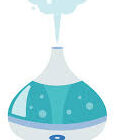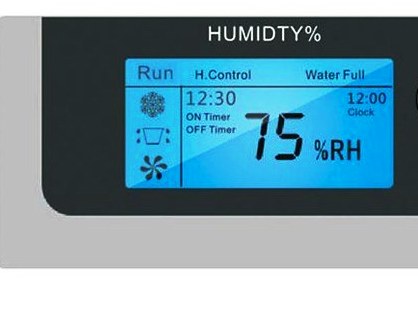Why Won’t My Dehumidifier Stay Running? Reasons Explained
If your dehumidifier keeps shutting off, it will not lower humidity in good time. Therefore, your indoor living spaces will be super uncomfortable.
Besides, you will have mold exposure symptoms to contend with because mold grows in humidity levels of 60 percent or higher.
Dehumidifiers are fairly simple in design and operation. Even their maintenance instructions are not too hard to follow.
But… anything that can go wrong will always go wrong!
We have seen many appliance problems when we looked at a dehumidifier that blows too cold air, a dehumidifier that blows too hot air, a Pure Enrichment humidifier not working, and many more.
We also looked extensively at the problem of a dehumidifier that keeps going off after running for some minutes.
This is a common problem, as many people who own portable dehumidifiers for the basement and other indoor spaces have said.
So, why does my dehumidifier keep shutting off? The humidity sensor is reading the humidity wrong, there is leaking refrigerant fluid or the humidistat has failed. If you enter the wrong humidity settings, if the dehumidifier reads the bucket as full when it isn’t, it will not run consistently.
If your unit is not running consistently, don’t throw it out yet. There are a few checks to make to get it running well again and lower the humidity as required.
12 reasons why dehumidifier keeps shutting off
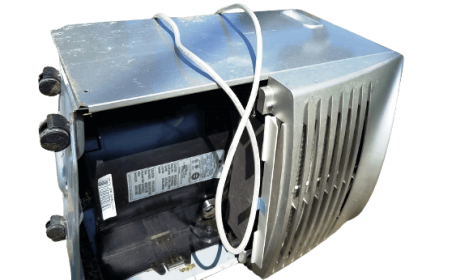
Here are the most vital checks to perform in a dehumidifier that keeps going off:
1. Check whether the bucket is full
When troubleshooting an appliance, always start with the simplest checks. In this case, ensure the dehumidifier bucket is not full.
The bucket fills up fast when you use a small dehumidifier for the bathroom while the humidity is very high. This is why dehumidifiers have space ratings.
When you switch it on, it will run for seconds or minutes before shutting down again. Modern dehumidifiers have auto-shutdown, so this can happen a lot.
2. Bad wiring and electrics
There is a lot of wiring on a dehumidifier circuit board. There is the compressor circuit board, the fan, the cord that goes into the wall plug, and so on. If any of these are spoiled, your unit is not going to work correctly.
Unfortunately, unless you know your way through appliance wiring, you might not be able to fix this.
Take the unit to the repair shop nearest to you. However, if it was a cheap unit, perhaps buying another one makes more sense.
3. The overload switch on the compressor going off
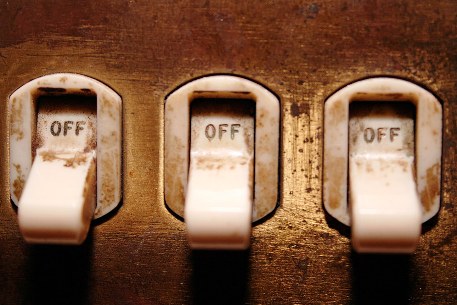
Your dehumidifier’s compressor has a fail-safe feature called the compressor overload switch. Many things could cause the compressor to overload. Frost is one of them. Failure in the wiring is the second one.
A fault in another part of the dehumidifier could cause the compressor to work harder than it should. This makes it heat up, and in return, it switches off to prevent damage.
If the overload switch has gone off, you will need to find its location in the user manual to switch it on again.
4. A failed humidity sensor
If the humidity sensor in a dehumidifier fails, the unit will keep shutting off. If this is the case, you will need to install a new one.
The sensor checks the level of relative humidity. If the RH level is higher than set, the sensor will send this information to the control board. The board will then “order” the fans to start working and draw in the moist air.
If the sensor fails, the dehumidifier will not work because there is no information relayed to the control board.
Also, if a dehumidifier has a thermistor, that too can fail, so it is good to make a diagnosis before you assume the sensor is to blame.
5. Clogged or dirty dehumidifier filter
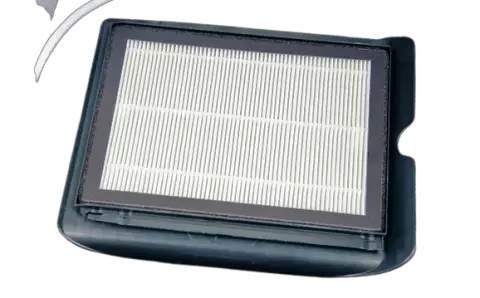
Most people ask: What happens if the dehumidifier filter is dirty?
There are many things, and among them, the dehumidifier might fail to work correctly or fail altogether.
The dehumidifier filter pulls mold, bacteria, dust, and other contaminants from the air that it sucks in.
Of course, if the filter is clogged, it will not pass the air very well. Thus, the dehumidifier keeps shutting down all the time.
Besides, as the mold and mold spores keep accumulating on the filter, you will experience a musty odor in your room. It will keep getting worse with time.
Clean the filter as recommended in the unit’s instructions. Also, ensure you replace the filter in good time.
6. Dead or stuck dehumidifier fan
Dehumidifiers have suction fans, which draw air into the appliance. Sometimes, it gets dirty and clogged with debris. The fan blades could also break, and this prevents the fan from working properly.
For the dehumidifier to run correctly, it needs to pull in the moist air. If it is not drawing in the air, it is not going to keep running since it has nothing to do. What we are saying is that a broken blade stalls the unit.
Sometimes, the fan motor could be failing. You can order a new one and replace it easily, or you can take your unit to a recommended repair shop. You could also ship it back to the manufacturer if it is still under warranty.
7. Very low indoor temperature (below 65°F)

There is a relationship between humidity and temperature. When using a dehumidifier, cold air is going to cause the liquid on the coils to start freezing.
Once the dehumidifier starts sucking the air with moisture, it will pass it over the condenser coils, where, as suggested, condensation is going to occur.
The water will drip into the collection pan, and the now-dry air will be released back into the room.
If the moisture drawn from the air turns to frost on the condenser coils, this unit is simply not going to work.
Luckily, you just need to let it thaw so that it can start working again. To do that, just switch it off, unplug it, and give it a couple of hours to defrost.
Check the heater so that the indoor temperature stays above 65°F.
8. The dehumidifier needs resetting
When you enter your settings in the control panel, it stores them to use in the future to start or switch off. To get the unit to run without stopping, sometimes all you need is to reset it.
Check whether your model has a reset button. You can use that to get it back to factory settings and re-enter your humidity settings.
If it does not have this button, just unplug it from power, let it stay for some minutes, and then plug it back in. This should complete the reset.
This can solve some simple problems, but it won’t help if the compressor has a problem, there are wiring issues, or the fan is not working.
9. It’s too large for the space
Although this happens rarely, it can still happen when you use a big dehumidifier in a small space. For instance, a dehumidifier that’s rated for 1500 square feet can work super fast in a 250-square-foot space.
Thus, it would be possible for it to switch off after a few minutes, having lowered the humidity to the desired level.
For instance, there is really no need to use a big dehumidifier with a pump in a small bathroom or kitchen. This is only appropriate for damp basements.
10. The refrigerant has leaked
The dehumidifier refrigerant liquid changes its state from gaseous to liquid and back, but it does not become depleted.
A refrigerant dehumidifier has condenser coils, an evaporator pad or filter, a compressor, a capillary tube, and, of course, a water bucket.
The refrigerant fluid is not supposed to run out, ever! By design, the dehumidifier should stay with the refrigerant fluid (mostly Freon) it came with for its entire lifespan.
However, there are many cases of dehumidifiers leaking Freon. If you see things such as below:
- The dehumidifier keeps going off
- The dehumidifier runs continuously but it does not lower the humidity
Most likely, the Freon has leaked. The coils are made of metal, and they can corrode with time. If this happens, Freon will start to leak.
11. Wrong control settings
For your dehumidifier to work correctly, you need to enter the right settings in the control panel. If it is your first time using a unit, you might enter the wrong settings unknowingly.
You need to set the desired humidity level at 50 or 45 percent. Once the dehumidifier lowers the indoor air moisture to that level, it stops working.
If you set the wrong humidity level, the dehumidifier might shut down sooner without lowering the humidity to the right level.
You might also set the humidity level just fine. However, if you do not set the right fan speed, the dehumidifier might not work properly.
12. The dehumidifier is too old
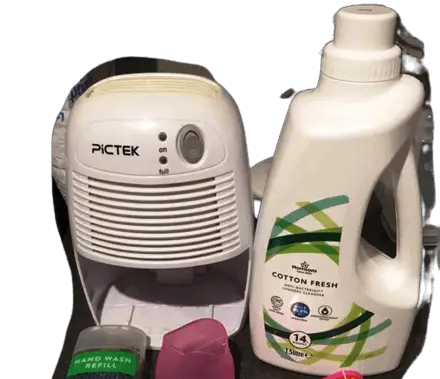
A unit that has served you well for at least five years can start misbehaving. It cannot last forever.
Most appliances come with what is referred to as a planned expiration date or planned obsolescence.
Mostly, the cheap dehumidifiers are going to have a shorter lifespan. There is no need to repair it if it is out of warranty unless a similar model is expensive.
If you paid $100 for your dehumidifier for the bedroom but the technician needs $30 to repair it, that’s sensible if it has served you for several years. If they are charging $50 or more, it’s best to buy a new one.
How to set a dehumidifier correctly
If you do not set up your unit correctly, it is not going to work correctly. Check the user instructions that the unit came with. However, here are the simple steps to follow:
First, plug the dehumidifier into the electricity outlet using its power plug. If it does not turn on automatically, find the On/Off button and press it to switch it on.
Secondly, find a button indicating humidity level, dryness level, or other similar wording. You need to turn the dial to the left or right to increase the dryness or humidity level.
Press the button for humidity level several times to get to the humidity level that you want to set for your indoor space.
Thirdly, find the button for setting the fan speed. You can use it to increase or decrease fan speed.
A low fan speed is less noisy, and it will lower the humidity slowly. Medium and high fan speeds are fast workers, but they are noisier.
Fourthly, set the timer. There is a button for the time, where you can set the time when you want the dehumidifier to go on.
Conclusion: The dehumidifier keeps shutting off
If your dehumidifier keeps shutting off without lowering the humidity to the required level, something is wrong with it.
If you live in Florida, the USA, London, or other high-humidity places, you need your dehumidifier to run correctly all the time.
If there is runaway humidity in your house, you will have mold colonies growing in the hidden spaces.
Exposure to mold causes serious symptoms in babies. It is also bad for adults and pets. In our article on mold toxicity signs, we saw just how bad this fungus can be.
